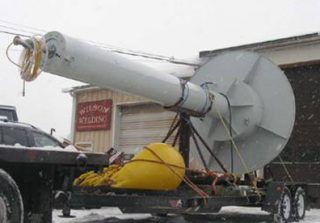Ocean wave energy

World-wide demand for electricity is expected to double within the next 20 years; this, combined with commitments to significantly reduce CO2 emissions in the same time-frame are increasing the search for clean, socially acceptable methods of generating power. Ocean waves are a large, relatively untapped renewable energy resource. According to London-based Carbon Trust, wave energy can realistically provide over 2,000 TWh/year of electricity–approximately 10% of global energy needs. Ocean waves and tidal currents are one of the most important, clean, cheap, rich, and reliable sources of renewable energy on the earth. Ocean energy in Europe has attracted a good deal of attention since 1970’s (about 30 companies and research institutes). The instability in the oil price, environmental issues, and finiteness of resources has made the Unites States to seriously investigate on ocean wave energy companies. It is sought to be a very potential and active area of research in the next decades. Although still in the early stages of development, ocean energy can and will provide enough power to supply a substantial part of the world energy demand. The wave energy industry is sometimes compared with the wind energy industry some 25 years ago when there was neither a unique design, nor a universal agreement on its future path. Wind industry has converged to a unique design over the past quarter of a century and now is a major player in the energy industry. Having learned from the evolution of wind power, wave energy is expected to come into play in a much shorter time period.
Demonstration of an experimental study on “free floating point absorber wave energy converter (WEC)” performed at MIT Parsons Lab on October 2008. (James Sannino and M.-R. Alam)
Full scale prototype of our free floating wave energy converter to be deployed in the Gulf of Maine. Newbury port, Massachusetts, January 2009.
Artist rendering of Resolute Marine Energy’s Millipede (Bonus question: why do we have/want bouncing in the right movie?)
References:
– Alam, Mohammad-Reza, “Wave Energy”, IRIS Magazine, Technology Avenue, Issue 1, Summer 2008, Pages 12-13.(PDF)
– Alam, M.R., Sannino, J., Goudy, G., Monteith, I., Page, S., Staby, B., “ Investigation on the performance of a free-floating point-absorber wave energy converter deployed in the Gulf ofMain”, Preprint.
– Sannino, J. and Alam, M.R. “Energy Extraction from Ocean Waves: A Direct Approach” The 2008 MIT Energy Conference: Energy Exhibition and Showcase, April 11th 2008, Cambridge Marriot Hotel, Cambridge, Massachusetts.

